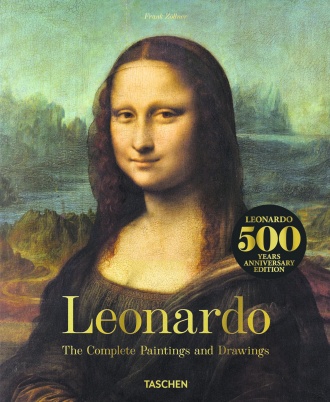This is the last article you can read this month
You can read more article this month
You can read more articles this month
Sorry your limit is up for this month
Reset on:
Please help support the Morning Star by subscribing here
Leonardo da Vinci 1475-1519: The Complete Paintings and Drawings
by Frank Zollner
Taschen, £50
THE next best thing to travelling the world to see Leonardo da Vinci’s original works is to pore over the plethora of beautifully reproduced, full-page illustrations of his paintings in Frank Zollner’s book.
Many are followed by several whole-page, full-bleed details which reveal the use of light, brushwork and subtle tonal changes.
They make it possible, for example, to peruse the sfumato around the Mona Lisa’s eyes and mouth or the play of light on her drapery as well as the whole painting.
Born to a peasant girl and a lawyer, da Vinci was carefully reared by his father’s family but forbidden university entrance due to his illegitimacy, so he was apprenticed to a leading Florentine artist’s workshop under the guild system.

Yet, as news of his extraordinary talent for painting, technical ingenuity and musical virtuosity spread among Italian princes and despots, they competed for his services. His social status rose from skilled artisan to pampered court artist to Ludovico Moro in Milan and, eventually, to being the French King Francois I’s artist-engineer and intimate friend.
With the ambition of placing painting on a scientific basis, he went beyond his outstanding artisanal expertise by making technical and scientific inquiries into virtually all visible phenomena through observation, so deriving underlying laws.
Zollner explains that although da Vinci’s paintings are best known, the vast majority of his output consisted of drawings and notes mostly made the better to understand, and so best represent, his subjects. But some, such as studies of flight, were purely scientific.
The extraordinarily range of his investigations included numerous dissections of human and animal corpses to reveal the functioning of skeletons, musculatures, the heart and intestines, the growth of trees and plants and the laws of light and the harmony of sounds.
He also created complex robots for his powerful patrons to impress their guests, along with military weapons and fortifications.
The majority of his drawings remained unknown for centuries since he did not publish them, so his success in his lifetime rested mostly on his paintings, informed by his underlying scientific understanding of humanity and nature.
At over 700 large pages, the book is an indispensable source of up-to-date visual documentation, scholarly references and bibliographies, combined with short but well-informed but accessible accounts of subject matter, visual analysis and patronage in their socio-cultural contexts.
Although expensive, the book is excellent value given its extraordinarily high production standard. It offers endless hours of pleasure and enlightenment.









